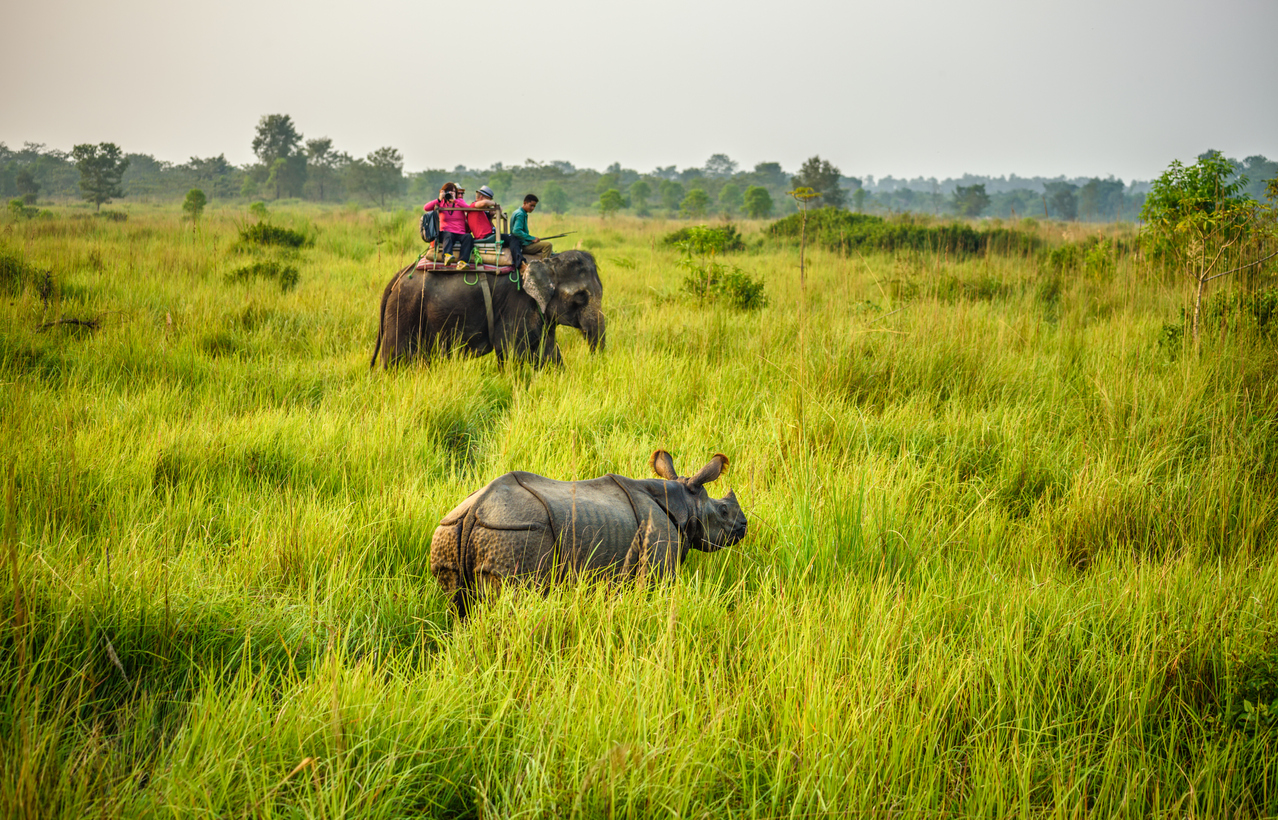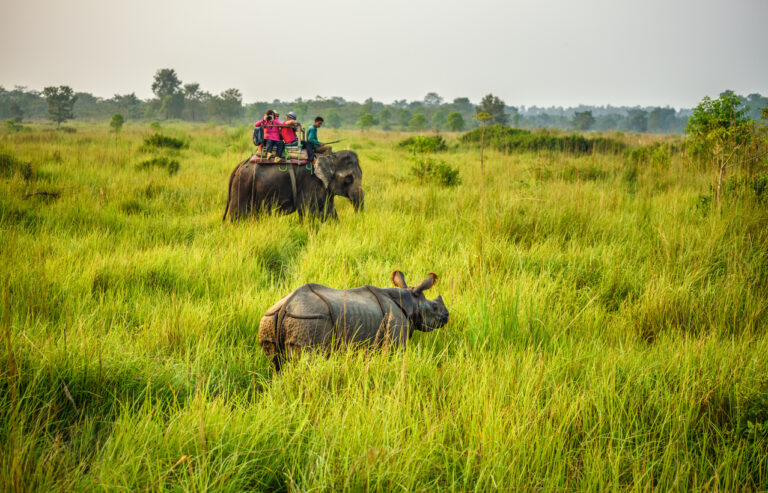
Chitwan, Nepal - October 23, 2015 : Tourists watching and photographing a rhino from the back of an elephant in Chitwan National Park.
Wildlife tourism is one of the most powerful and emotional experiences travel can offer. Standing a few feet away from a wild elephant in Sri Lanka, watching a leopard prowl in South Africa, or snorkeling near sea turtles in the Maldives — these moments can be unforgettable. But with such awe-inspiring encounters comes a critical question: is our presence helping or hurting the very creatures we admire?
This blog explores the ethical complexities of wildlife tourism and what conscious travelers can do to ensure they’re part of the solution, not the problem.
What Is Wildlife Tourism?
Wildlife tourism refers to any travel experience where animals are the main attraction. This includes safaris, marine life tours, bird-watching expeditions, and even activities like elephant rides or tiger selfies. The industry brings in billions of dollars annually and often plays a significant role in conservation funding — but it also carries risks of exploitation, habitat disturbance, and long-term harm.
The Good Side: When Wildlife Tourism Helps
- Funding Conservation Projects
Responsible wildlife tourism can provide essential revenue to national parks and conservation groups. In countries with limited resources, tourist dollars may directly support anti-poaching units, breeding programs, and habitat restoration. - Creating Local Jobs and Incentives
Wildlife tourism often generates employment in rural communities. When locals earn a livelihood through conservation-related tourism, they’re more likely to protect, rather than poach, the animals in their environment. - Educating and Inspiring Travelers
Seeing animals in the wild fosters emotional connections and can inspire people to care more deeply about environmental issues. A responsible tour can be both educational and transformative.
The Dark Side: When It Becomes Harmful
- Animal Captivity and Cruel Training
Many animals used in tourist attractions — such as elephants, big cats, or monkeys — endure cruel training methods, unnatural captivity, and daily exploitation. Just because an animal is present doesn’t mean it’s well-treated. - Disturbing Natural Behavior
Crowding animals, feeding them for photo ops, or chasing them for a closer view can stress wildlife and disrupt natural behaviors like hunting, breeding, or migration. - Habitat Degradation
Irresponsible tourism can damage delicate ecosystems. For example, too many boats near coral reefs or safari vehicles veering off paths can degrade the natural landscape. - False Conservation Claims
Some so-called “sanctuaries” or rescue centers are, in reality, businesses that breed animals for profit, offer exploitative experiences, or mislead tourists into thinking they’re supporting a good cause.
Red Flags to Watch Out For
- Animals performing tricks or being ridden
- Close physical contact (petting, selfies) with wild animals
- Facilities with little transparency or inconsistent animal welfare policies
- Breeding programs with no intention of reintroduction to the wild
- Overcrowded or noisy wildlife observation areas
What Responsible Wildlife Tourism Looks Like
- Wildlife in the Wild
The most ethical wildlife experiences involve observing animals in their natural habitats with minimal intrusion. Responsible operators maintain safe distances and use silent observation techniques. - Certified Sanctuaries and Rescues
Look for facilities accredited by organizations like the Global Federation of Animal Sanctuaries or similar local regulatory bodies. These places often do not allow physical interaction and prioritize animal well-being. - Limit Your Footprint
Choose eco-friendly accommodations, stick to marked paths, avoid flash photography, and never feed wild animals. Small actions go a long way. - Ask Questions
Before booking, ask tour providers about their animal welfare policies. A responsible operator will have clear answers and no problem being transparent.
Conclusion: Tourism with a Conscience
Wildlife tourism walks a fine line between wonder and harm. As travelers, it’s up to us to make informed, ethical choices that prioritize the well-being of animals and the health of ecosystems. With awareness and intention, we can still enjoy the beauty of the wild while ensuring that future generations — human and animal alike — continue to thrive.
Travel can be powerful. Let’s make sure it’s not at the cost of the voiceless.



